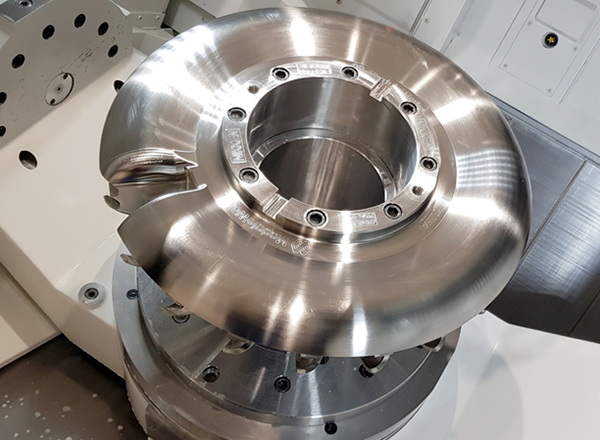As part of a collaboration project, Okuma and ModuleWorks have devised a solution that enables an entire Pelton wheel to be machined from a single metal billet. This procedure accelerates production and reduces manufacturing costs.

In short, Pelton wheels are the driving force of the hydro-power industry, extracting energy from fast-flowing water to generate electricity. However, manufacturing a Pelton wheel is a challenge. Due to the wheel’s complex design, the impulse blades are usually machined separately and then mounted to the rim, which is time consuming and adds to production costs.
To provide Pelton wheel machining on its MU-V series of machining centres, Okuma soon realised it would need technically sophisticated tool-path generation and simulation software to master the special technical challenges. For this reason, Okuma teamed up with ModuleWorks to find a way forward.
Surmounting the sheer physical limitations means the wheel is machined in two stages. One half of the wheel is machined before being turned 180° to enable the tool to reach the other half. The ModuleWorks triangle mesh roughing modules were used to cut the rough shape of the Pelton wheel.
For creating the bucket-shaped blades, the ModuleWorks adaptive roughing strategy uses consistent tool-path engagement and a smooth tool-path motion to generate a dynamic pattern and a high-performance roughing process that reduces the overall costs of producing non-prismatic shapes. For optimal finishing, ModuleWorks geodesic machining is said to deliver a high-quality finishing pattern and comes with features for producing rounded corners using a morph or constant step-over pattern. This capability enables Okuma to meet the high demands of the workpiece and ensure optimal energy transfer from the high-pressure flowing water.
ModuleWorks five-axis calculation strategies also extend the reach of the tool to provide enhanced tilting strategies on complex workpiece geometries and areas with deep grooves.
For further information www.moduleworks.com















